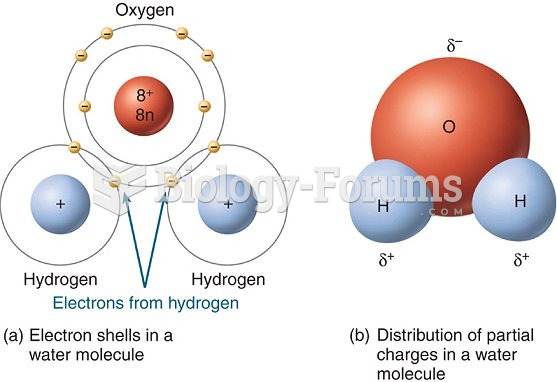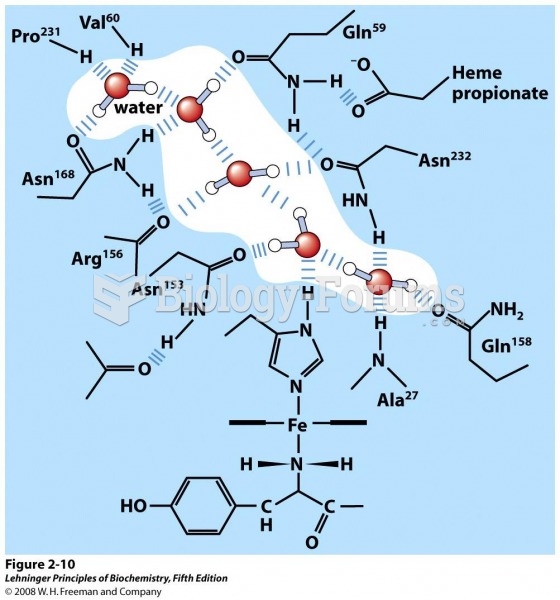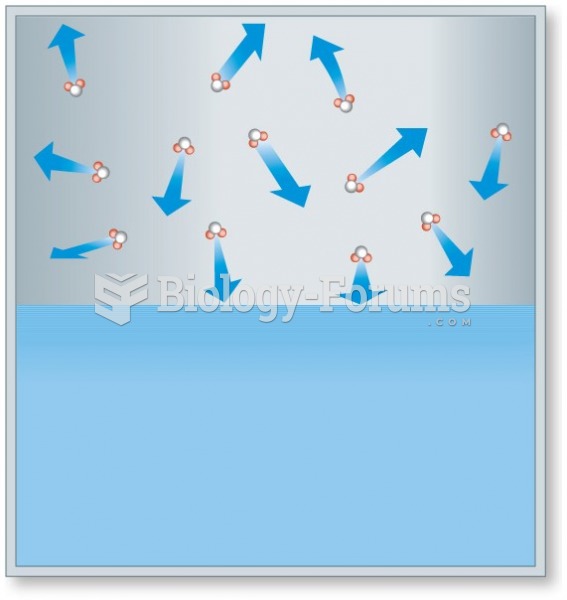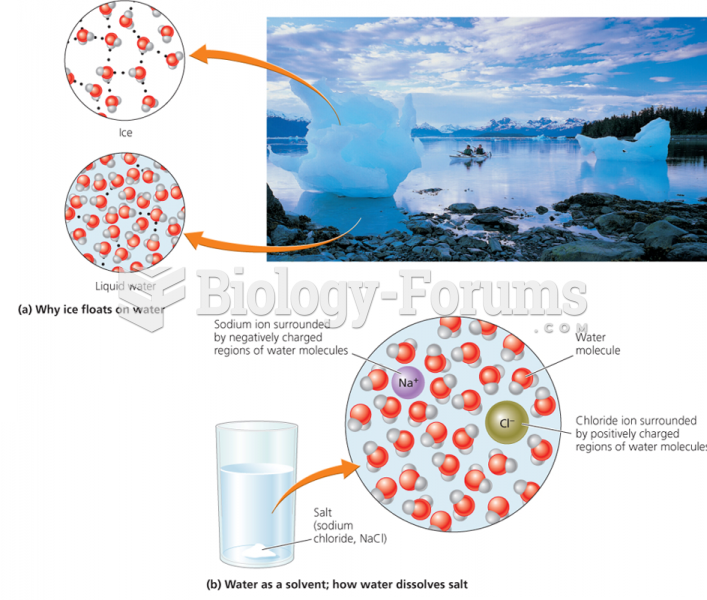Answer to Question 1
ANSWER: If you water your lawn on a hot afternoon, when the relative humidity is low, much of the water will evaporate quickly from the lawn instead of soaking into the ground. Watering the same lawn in the evening or during the early morning, when the relative humidity is higher, will cut down on evaporation and increase the effectiveness of watering.
Answer to Question 2
ANSWER: Student answers may vary slightly, but need to demonstrate comprehension of the following concepts. An increase in the water vapor content of the air (with no change in air temperature) increases the air's relative humidity. The reason for this increase resides in the fact that, as more water vapor molecules are added to the air, there is a greater likelihood that some of the vapor molecules will stick together and condense. Condensation takes place in saturated air. Therefore, as more and more water vapor molecules are added to the air, the air gradually approaches saturation, and the relative humidity of the air increases. Conversely, removing water vapor from the air decreases the likelihood of saturation, which lowers the air's relative humidity. In summary, with no change in air temperature, adding water vapor to the air increases the relative humidity; removing water vapor from the air lowers the relative humidity.
As the air temperature increases (with no change in water vapor content), the relative humidity decreases. This decrease in relative humidity occurs because in the warmer air the water vapor molecules are zipping about at such high speeds they are unlikely to join together and condense. The higher the temperature, the faster the molecular speed, the less likely saturation will occur, and the lower the relative humidity. As the air temperature lowers, the water vapor molecules move more slowly, condensation becomes more likely as the air approaches saturation, and the relative humidity increases. In summary, with no change in water vapor content, an increase in air temperature lowers the relative humidity, while a decrease in air temperature raises the relative humidity.
In many places, the air's total vapor content varies only slightly during an entire day, so it is the changing air temperature that primarily regulates daily variations in relative humidity. As the air cools at night, the relative humidity increases. Normally, the highest relative humidity occurs in the early morning, during the coolest part of the day. As the air warms during the day, the relative humidity decreases, with the lowest values generally occurring during the warmest part of the afternoon.
Answer to Question 3
ANSWER: An appropriate student answer would be that when both water and ice exist at the same temperature below freezing, the saturation vapor pressure just above the water is greater than the saturation vapor pressure over ice. In other words, at any temperature below freezing, it takes more vapor molecules to saturate air directly above water than it does to saturate air directly above ice. This situation occurs because it is harder for molecules to escape an ice surface than a water surface. Consequently, fewer molecules escape the ice surface at a given temperature, requiring fewer in the vapor phase to maintain equilibrium.







